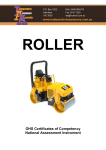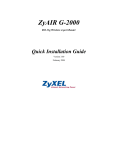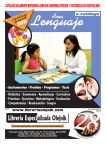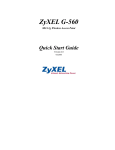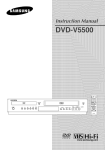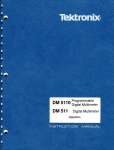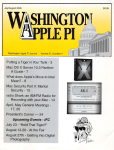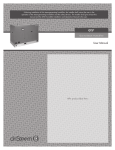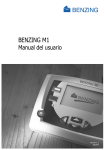Download dozer assessment instrument - Independent Assessors Australia On
Transcript
DO DO OZ ZE ER R OH HS Ce ertifica ates off Competenc cy Na ational Asse essme ent Ins strume ent DOZER ASSESSMENT INSTRUMENT NATIONAL GUIDELINES FOR OCCUPATIONAL HEALTH AND SAFETY COMPETENCY STANDARDS FOR THE OPERATION OF LOADSHIFTING EQUIPMENT AND OTHER TYPES OF SPECIFIED EQUIPMENT [ NOHSC: 7019 (1992) ] July 1998 Loadshifting Equipment Dozer ASSESSMENT Part 1 Performance Part 2 Oral/Written Loadshifting: Non Forklift – General Guidelines May 1994 Contents Page Assessor guidelines - general i Part one - Performance Assessment 1 Part two - Oral/Written Assessment 7 Assessment Summary 12 Assessor guidelines - general 1. Introduction 2.2 1.1 Scope These general guidelines apply to all the assessment instruments for the certificates of competency prescribed by the National Guidelines for Occupational Health and Safety Competency Standards for the Operation of Loadshifting Equipment and Other Types of Specified Equipment. Confirm appointments Prior to an assessment, you need to confirm the date, time and location of the assessment with the applicants and any other relevant people. 2.3 Equipment availability The availability of equipment, materials and a suitable working area must be organised and confirmed, prior to the assessment. 2.4 Workplace factors Because procedures and processes vary greatly between workplaces, it is important for assessors to plan their approaches to meet the requirements of the individual workplace. Assessors should also be familiar with the publication Assessment guidelines for National Occupational Health and Safety Certification Standard for users and operators of industrial equipment. 1.2 1.3 Additional guidelines Guidelines which provide additional specific information to certificate assessors are also included in each assessment instrument. Included, where appropriate, are specific instructions on the usefulness of training records (such as log books) and other certificates with overlapping competencies. Evidence of competence Evidence of competence is established in a number of ways. The methods used in the following instruments involve: assessment of practical • performance written and/or oral answers to • questions on underpinning knowledge. 2. Preparing for the assessment 2.1 Study the instruments You need to read the assessment instruments and specific instructions carefully before beginning an assessment. Loadshifting: Non Forklift – General Guidelines July 1998 Make sure you take the timeframe into account when planning the assessment and also make applicants aware of any time limits. 2.5 Selecting questions Questions for the written/oral assessment should be randomly selected, either by hand or using the computer system, if applicable. 3. Conducting the assessment 3.1 Provide an explanation Begin by explaining clearly to the applicants what is required of them. Check that applicants have provided (or have been provided with) the necessary tools and equipment. 3.2 Practical performance Complete the performance checklist, as the applicant works through the required tasks. Wherever possible, this should be done in a normal working environment. i Do not ask the applicant questions while he or she is performing a task, as this can be distracting, and may affect the time taken to complete the assessment. If, at any time, the applicant is endangering himself/herself or others, stop the assessment immediately. This indicates that the applicant is not yet competent and may require further training, before being reassessed. The original and duplicate are given to the applicant. The applicant provides the original to the certifying authority. The triplicate is retained by the assessor. 4.2 Assessments should also be stopped, if equipment or property are likely to be damaged. 3.3 3.4 Knowledge The knowledge assessment covers both oral and written exercises. The model answers provided with the knowledge assessment instruments are not necessarily exhaustive. Use your own judgement when scoring alternative answers. Competency requirements In order for you to deem an applicant competent, he or she must have completed each section of the assessment to the standard required. You should note any time constraints when arriving at your decision. The standard required for each instrument is specified in the specific guidelines and/or on the summary page at the end of each assessment. In the case of a repeat assessment, the assessor can decide to apply the whole or only part of the assessment. 4.3 Recording responses Each item and question on the assessment forms you use is accompanied by a box. Assessors must complete every box as follows: Additional comments Where an applicant fails to meet the standard of competence, you should add a written comment on the Assessment Summary, which briefly explains the problem. Advice to the applicant, on the appropriate remedial action should also be included. This will also assist the certificate assessor, in the event that the applicant undergoes future reassessment. CORRECTPERFORMANCE/ANSWER Likewise, if an applicant demonstrates outstanding or remarkable performance, this should be noted. NOT YET ACHIEVED NOT APPLICABLE 4.4 If a box is marked incorrectly, cross out the mistake, mark the correct response alongside, and initial the change. 4. Determining competencies 4.1 Assessment summary A specific assessment summary is given for each certificate class. This is to be filled in and signed by the assessor, and countersigned by the applicant. Further investigation As a certificate assessor, it is your role to determine whether or not an applicant has achieved the standard necessary for the certifying authority to be able to grant a certificate of competency. s Loadshifting: Non Forklift – General Guidelines July 1998 ii National Guidelines for OHS Competency Standards Loadshifting Equipment Dozer Performance Assessment July 1998 DOZER (Performance assessment) 1.9 Assessor guidelinesspecific Load or simulate loading dozer on a float. 1.10 Shut down equipment and secure site. ASSESSMENT INSTRUMENT - SPECIFICATIONS 2. Prior learning and experience 2.1 An applicant who holds a front-end loader/backhoe, front end loader, excavator or dragline certificate does not require assessment in sections 2, 3, and 4. 2.2 Applicant who produces satisfactory documentary evidence (such as a log book) which establishes 50 days experience in dozer operations specifically covering performance in sections 2, 3, and 4 does not require assessment in these sections. 3. The performance assessment can be conducted at any location which has: The performance assessment covers the following Loadshifting elements. 1.1, 1.2, 1.3, 2.1, 3.1 & 3.2 1. The assessment requires the operator to check the equipment, plan the work and to safely and competently operate the Dozer. The assessment is performed in ten sections: 1.1 1.2 Conduct routine pre-operational checks on dozer/equipment and security of attachments. Inspect the site and plan work to be done. 1.3 Conduct pre-operational and post start up checks. 1.4 Drive the dozer to the work area. 1.5 Use rippers to loosen soil. 1.6 Excavate and stockpile soil. 1.7 Use the dozer in the crane mode. 1.8 Spread soil, consolidate and level the site. Dozer - Performance July 1998 • • 4. 5. sufficient clear space to operate the machine ground suitable for excavating Equipment and Resources Required: - Dozer and equipment. - Suitable site on which to use the dozer and equipment to rip, excavate, stockpile, spread and level soil and to load or simulate loading the dozer on a float. Unless other arrangements are agreed to by the assessor, it will be the responsibility of the applicant, applicant's employer or trainer to provide the required equipment and resources. 1 6. To be assessed an applicant must wear: • • • safety helmet(where required) appropriate footwear other protective clothing and equipment as appropriate. 7. The performance of each applicant is to be recorded on the assessor's checklist. 8. Safety of personnel Overall competence is achieved when competence in all units has been assessed. When an applicant is working dangerously, recklessly or without the necessary co-ordination, the assessor must direct the applicant to cease work and terminate those parts of the assessment immediately. 9. The items in the shaded boxes are of critical importance. Failing to get any of these correct means that competency has not been achieved. 10. Where an applicant is assessed as `not yet competent' he/she must be informed of the reason(s) in order to gain further appropriate training. 11. The full performance assessment can take up to 1 hour. 12. The general assessment requirements are set out in Assessor's guidelines general. 13. The applicant's competence in each unit is to be summarised for both performance and knowledge on the summary sheet. Competence is achieved for a unit when the required number of boxes for that unit have been ticked or marked `N/A'. Dozer - Performance July 1998 2 CONDUCT ROUTINE CHECKS: PLAN WORK AND EQUIPMENT: Performance Criteria 1.1.1 and 1.1.2 Performance Criteria 1.2.1, 1.2.3 and 1.2.5 1. 2. Conducts routine checks on vehicle/equipment: Track condition and tension • or Tyre condition and inflation • Inspects site and plan work: Identifies Hazards power lines • Checks liquid levels Fuel • • phone lines • service drains obstructions • hydraulic oil • • engine oil • battery Access and path of movement is indicatedto work area • • coolant • working direction Checks structure for defects damaged or broken parts • Fits appropriate equipment suitable tools used • • • correct procedure adopted • works safely loose nuts, bolts and couplings Checks attachments for defects damage to blade • Performance Criteria 1.3.1. • rippers for missing, worn or loose tips • hoses, fittings, hydraulic rams for oil leaks • connections for missing pins or keepers 3. Conducts pre-operational and post startup checks in accordance with manufacturer's specifications/operating manual. • mounts correctly • adjusts seat • in neutral Checks other equipment for defects • warning device • • engine start • gauges • grease holes and grease pins checks attachments for security Dozer - Performance July 1998 3 • warm up allowed • attachment movement Excavates and stockpiles soil: uses blade at correct depth • and angle clear for travel • pushes full blade of soil • foot brake • • holding brake • uses appropriate path of travel ensures direction of travel is clear • steering 6. SHIFT LOAD: • reverses in higher gear or speed • maintains level working surface • travels at an acceptable and safe speed. Performance criteria 2.1.1 and 2.1.3 4. Drives to the work area: raises attachments smoothly • • blade low to allow clear vision • ensures direction of travel is clear • selects appropriate route 7. Spreads, consolidates soil and levels the site: uses blade at correct level • and angle • travels at safe speed • pushes sufficient soil to level surface uses appropriate path of travel Performance Criteria 2.1.2 5. Uses rippers to loosen soil: lowers rippers while moving • • rips straight, with grain and down slope • uses sufficient speed and revs for work • does not turn while ripper is penetrated. • retracts rippers at completion of run. Dozer - Performance July 1998 8. • ensures direction of travel is clear • reverses in higher gear or speed • travels at an acceptable and safe speed Loads or simulates loading a dozer: checks that float is ready • • approaches at correct angle and speed 4 • positions dozer on float • lowers blade and rippers • secures dozer Shuts down equipment neutralises controls • General performance of sections 4, 5, 6, 7 and 8 Performance criteria 2.1.1, 2.1.4, 2.1.5 and 2.1.6 • equipment suitable for the work • machine suitable for ground conditions • applies holding brake • idles to stop, locks ignition Post operational check minor servicing • • checks and reports any damage Avoids hazards parks away from danger areas • • competently shifts material • equipment operated at a safe speed • signals are interpreted and observed • loads pushed to ensure stability • loads pushed to avoid causing hazard • removes keys • locks cabin (if applicable) SHUT DOWN EQUIPMENT AND SECURE SITE: Performance criteria 3.1.1, 3.1.2, 3.1.3 and 3.2.1 9. Shut down equipment and secure site: Parks equipment machine parked in suitable • area • attachments lowered to ground Dozer - Performance July 1998 5 National Guidelines for OHS Competency Standards Loadshifting Equipment Dozer Oral/Written Assessment July 1998 DOZER (Knowledge) Unit 2.0 Assessor guidelines specific ASSESSMENT SPECIFICATIONS 2.1 INSTRUMENT The knoweldge assessment following Loadshifting elements. 2.1.1 2.1.2 2.1.3 2.1.5 2.1.7 – covers Shift load the Unit 3.0 3.1 1.1., 1.2, 1.3, 2.1, 3.1 & 3.2 Shut down equipment 3.1.1 3.1.3 1. 2. Knowledge assessment for Dozer is divided into three units and seventeen sections (performance criteria 1.1.1, 1.1.2 etc). To satisfy the requirements for competency the applicant must correctly answer (either in writing or orally) the specified number of questions in each of the following sections: 3.2 3. 1.2 Plan work 1.2.1 1.2.2 1.2.3 1.2.4 1.2.5 1.3 (select 4) (select 1) (select 2) (select 3) (select 1) (select 1) (select 2) Check controls and equipment 1.3.1 1.3.2 Dozer - Performance (select 1) (select 1) July 1998 (select 1) Prior learning and experience: An applicant who holds a front-end loader/backhoe, front-end loader, excavator or dragline certificate and who answers questions for performance criteria 1.1.1, 2.1.2 and 2.1.5 satisfactorily, is not required to complete the rest of the assessment. Conduct routine checks 1.1.1 1.1.2 (select 1) (select 1) Secure site 3.2.1 Unit 1.0 1.1 (select 1) (select 1) (select 3) (select 1) (select 2) 4. The full knowledge assessment of twentyseven questions can take up to thirty minutes. 5. The items in the shaded boxes are of critical importance. Failing to get any of these correct means that competency has not been achieved. 6. The applicant's competence in each unit is to be summarised for both performance and knowledge on the summary sheet. Competence is achieved for a unit when the required number of boxes for that unit have been ticked or marked `N/A'. 7 Overall competence is achieved when competence in all units has been assessed. 7. What fluid levels should be checked on the machine before it is used? Fuel, engine oil, radiator coolant, hydraulic oil level, transmission oil and battery. 8. How would you establish the service and the frequency of the service to be carried out on the machine you are required to operate? By the service manual provided by The manufacturer. 9. What should be the first check of your machine at the start of your shift? Walk around it looking for visual defects. 10. Name five pre-operational checks that should be carried out on the loadshifting equipment before the unit is started. Radiator, battery, fuel, oil, hydraulic lines, tyres or tracks, structure etc. CONDUCT ROUTINE CHECKS: Performance criteria 1.1.1 (select 3 including 1 with a shaded box) 1. What precautions must be taken when an inspection or work has to be performed under a raised blade or attachment? Provision provided to prevent the blade or attachment from descending. 2. Name three defects that you would look for when conducting a routine check on the hydraulic system of the dozer. Hydraulic oil leaks, loose connections and hoses for splits, fractures or bulges. 3. Why shouldn't the hydraulic oil storage tank be filled above the ¾ full or dipstick level? Space in the tank is needed for expansion and displacement in the system. 4. 5. 6. What problem could be indicated by bubbles or milky engine oil in the sump? Water leaking into the sump. When changing a battery which battery clamp should be removed first? The earth battery clamp. Briefly describe how you would check the air pressure of water filled tyres on a rubber tyred dozer. Check with the valve at the top of the wheel. Dozer – Oral/Written July 1998 Performance criteria 1.1.2 (select 1) 11. What would you look for to ensure that the dozer attachments are securely attached to the machine? Ensure that all moving joints are not worn and that safety pins or clips are not damaged, loose or lost. PLAN WORK: Performance criteria 1.2.1 (select 2) 12. In built-up areas what checks should be made under the ground before excavation commences? Check for power, telephone, gas and water services etc. 13. What would you refer to in order to establish the location of underground services? Supply authority or council maps. 8 14. 15. What is the main danger associated with pushing a large dead tree over with the blade of a dozer? Limbs of the dead tree could break off and fall backwards onto the dozer. If you accidentally damaged an underground electrical cable who would you immediately contact to render the power supply safe? The electrical supply authority. Performance criteria 1.2.2 (select 3 including 1 with a shaded box) 16. What shall be provided to prevent a person falling into a trench or excavation? Barricades or guardrails or fencing 22. What gear should be selected to travel down a steep sloping surface? A low gear. The gear required to climb the sloping surface. Performance criteria 1.2.4 (select 1) 23. What would you be required to obtain from the Relevant Authority to operate a machine in a hazardous working area? The required permits. 24. What government licence do you require to drive a rubber tyred dozer on the road? . The appropriate licence Performance criteria 1.2.5 (select 2) 17. When should ear protection be worn? Where the noise could contribute to the loss of hearing. 25. What is the most appropriate equipment to use on a dozer to loosen hard rock? Rippers. 18. What must be provided to protect the operator when a dozer is used for clearing trees or demolition? An over head protective structure. (AS2601) 26. What specific type of dozer blade would you use for dozing coal? A coal blade. 27. Name four attachment that may be used on the front of the dozer? Bull blade, angle blade, coal blade, root rake, stick rake, tree pusher or pusher blade (for scrapers). 28. Other than the blade of the dozer what attachment would you use to push over a tree? A tree pusher. 19. When should a person wear a safety helmet? Where the person could be struck on the head. 20. What is the minimum type of footwear that an operator should wear to operate loadshifting equipment? Non-slip footwear that encloses the foot. CHECK CONTROLS AND EQUIPMENT: Performance criteria 1.2.3 (select 1) Performance Criteria 1.3.1 (select 1) 21. 29. Which is the preferred route of travel, diagonally across or directly down a sloping surface? Directly down the sloping surface. Dozer – Oral/Written July 1998 On the post start-up check you notice a bulge form in a hydraulic hose. What action would you take? Switch off the machine and have the hose replaced. 9 30. When should tests, checks and inspections be made by the operator on the dozer that is to be operated? Daily before use. 37. On a sloping surface which direction is the most economical and appropriate direction to perform the dozing? Down the slope. 38. Which is the easier to control downhill, a full blade or part blade of material? A full blade of material. 39. Of topsoil or clay which is more cohesive and harder to excavate, push and spread? Clay. 40. How would you establish the capabilities and limitations of the equipment? By information provided by the employer and documented by the manufacturer. 41. Before reversing a machine what precaution should be taken? Ensure the direction of travel is clear. Performance criteria 1.3.2 (select 1) 31. What action would you take with damage and defects found on the machine? Report the damage and defects to authorised person and ensure safety is not jeopardised. SHIFT LOAD: Performance criteria 2.1.1 (select 1) 32. 33. 34. Is it permissible to use a sling around the blade of a dozer to hoist a load? No. How can traction be improved if the tracks of the dozer are slipping on the hard smooth rock being ripped? Loosen the surface and leave a Layer of loose material on the surface being ripped. When dozing on a soft muddy material what action would you take to get traction if the tracks start to spin? Get traction by dropping the load being pushed. Performance criteria 2.1.2 (select 1) 35. How would you establish the SWL for a side boom (pipe layer) attached to the dozer? By the load plate attached to the side boom. Performance criteria 2.1.3 (select 3) 36. In relation to the grain of the rock which direction should ripping be performed? In the direction of the grain of the rock. Dozer – Oral/Written July 1998 Performance criteria 2.1.5 (select 1) 42. Applicant to state the meaning of the hand signal of "stop" demonstrated by the assessor. Stop. Performance criteria 2.1.7 (select 2) 43. What action would you take if a hydraulic hose sprung a leak while the bucket was raised? Lower bucket and have repairs carried out. 44. How would you dismount a machine that contacted live power lines where the machine could not be released or the power turned off? Jump clear ensuring contact with the ground and machine is not at the same time. 10 45. How would you counter a sideways slide of a dozer on a sloping surface? Turn the dozer down the grade and drop the blade. SHUT DOWN EQUIPMENT: Performance criteria 3.1.1 (select 1) 46. Name three areas where you would not park the dozer. Access ways, near overhangs, refuelling sites, tidal or flood areas, . adjacent to an excavation 47. When leaving the dozer what should be done with all hydraulically raised attachments? Attachments lowered and pressure removed from hydraulic lines. Performance criteria 3.1.3 (select 1) 48. What post-operational checks should be carried out by the operator on the dozer to prepare it ready to be reoperated? Check the structure and equipment for defects and wear and the oil, fuel and water levels. SECURE SITE: Performance criteria 3.2.1 (select 1) 49. What shall be provided when a dozer has to be parked on or protrudes onto an access way? Barricades, lights and signs. 50. For what reason should the key be removed from the ignition of the machine? To prevent unauthorised movement. Dozer – Oral/Written July 1998 11 Assessment summary Unit Number of boxes given !or NA Number of boxes required to meet standard Were all critical boxes given !or NA? Assessment standard requirements achieved * Form of assessment Total number of boxes in the assessment Performance 39 35 Yes No Yes No Knowledge 16 9 Yes No Yes No Yes No 1 Assessment completed within time allowed Performance 46 41 Yes No Yes No Knowledge 8 5 Yes No Yes No Yes No NA 2 S Performance 10 9 Yes No Yes No Knowledge 3 2 Yes No Yes No Yes No NA 3 Assessment completed within time allowed *Performance standard = Number of items required to meet standard (including all critical boxes) Knowledge standard = Number of questions required to meet standard (including all critical boxes) NA Summary Candidate is: (circle the result obtained) • COMPETENT • NOT YET COMPETENT Name of assessor …………………………………………. Signature ………………………………….. Date: ………………… Name of candidate ……………………………………………… Signature………………………………………………. Comments/feedback (assessors to make any additional comments which clarify the assessment) …………………………………………………………………………………………………………………. …………………………………………………………………………………………………………………. …………………………………………………………………………………………………………………. ………………………………………………………………………………………………………………….. Dozer - Performance July 1998 12



















